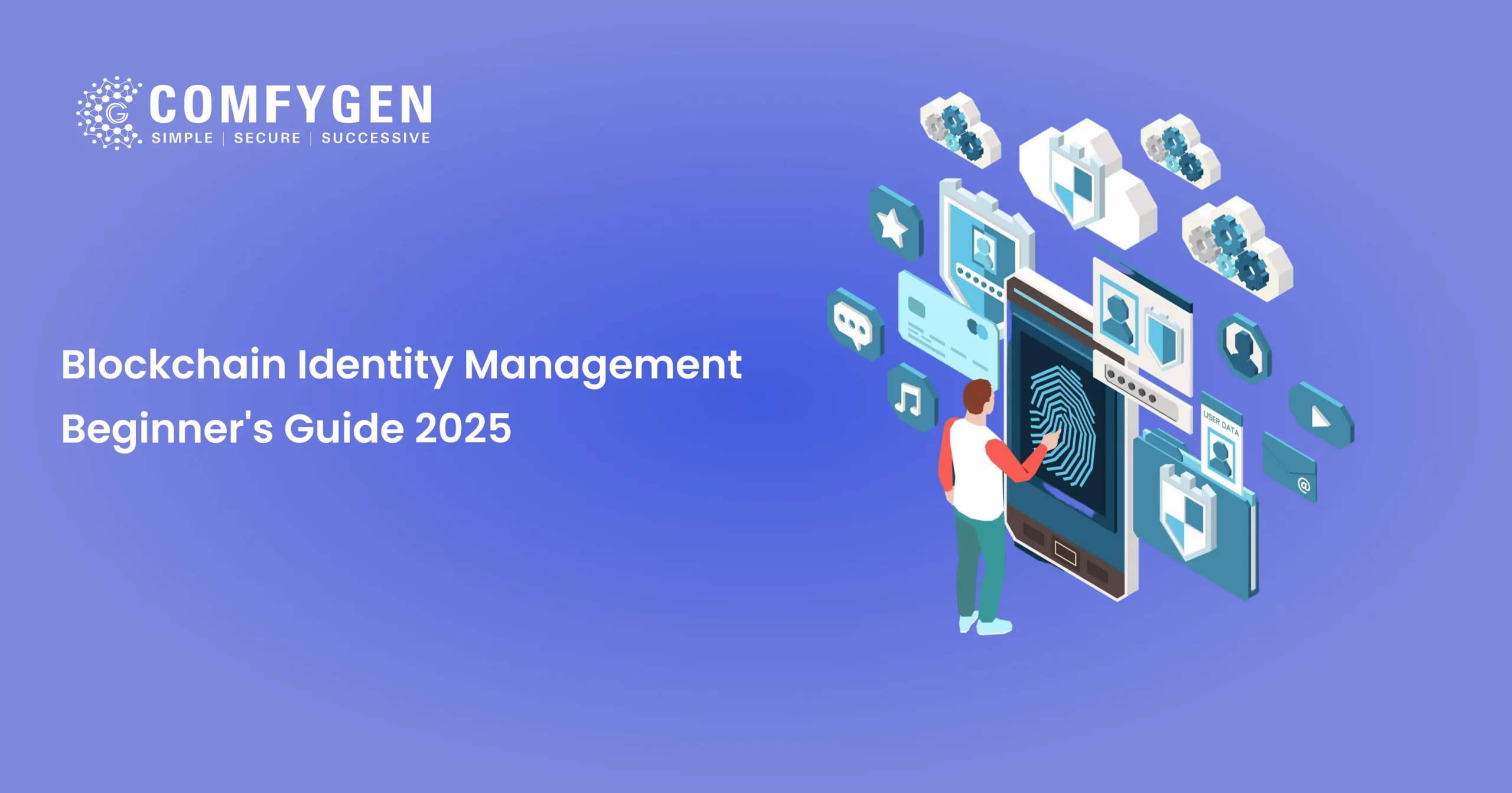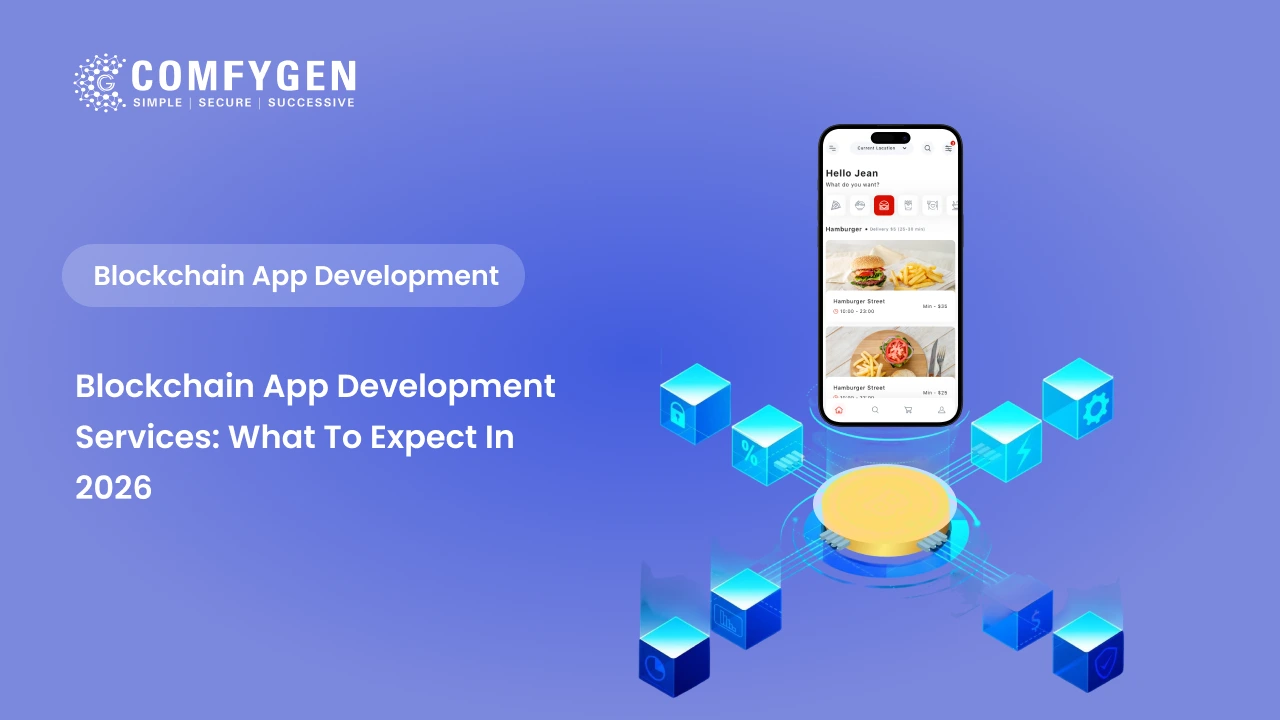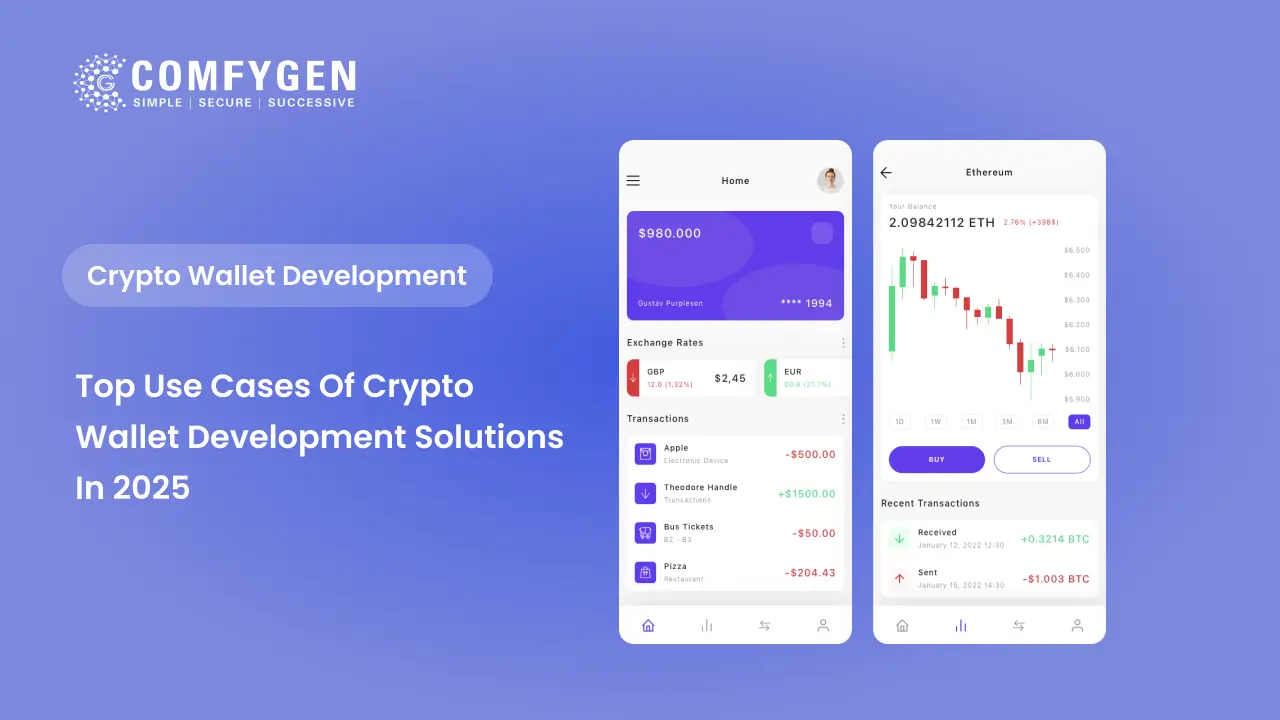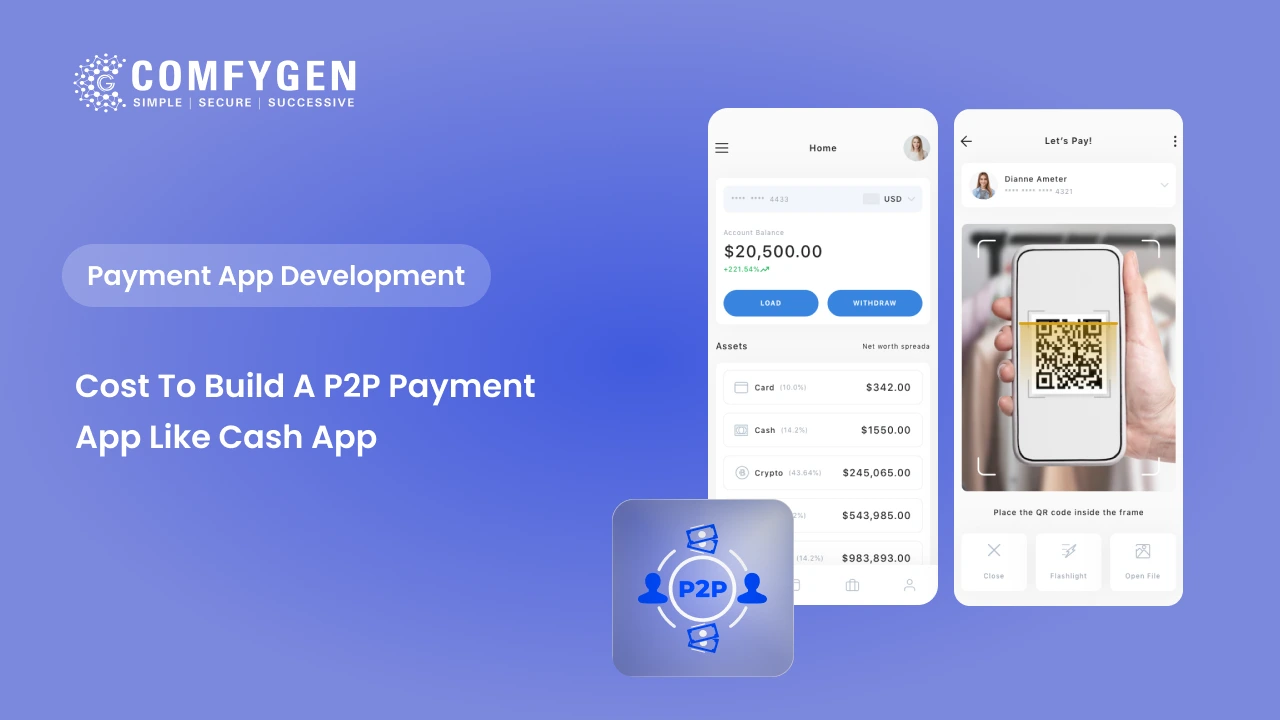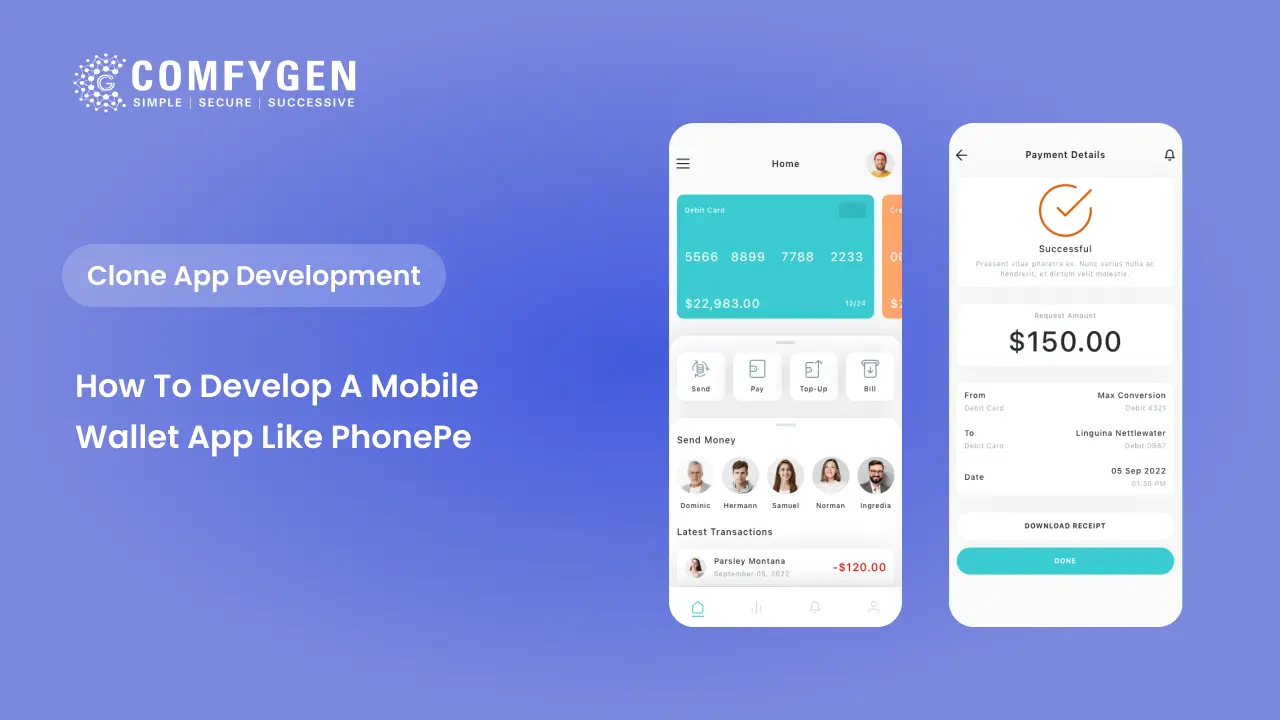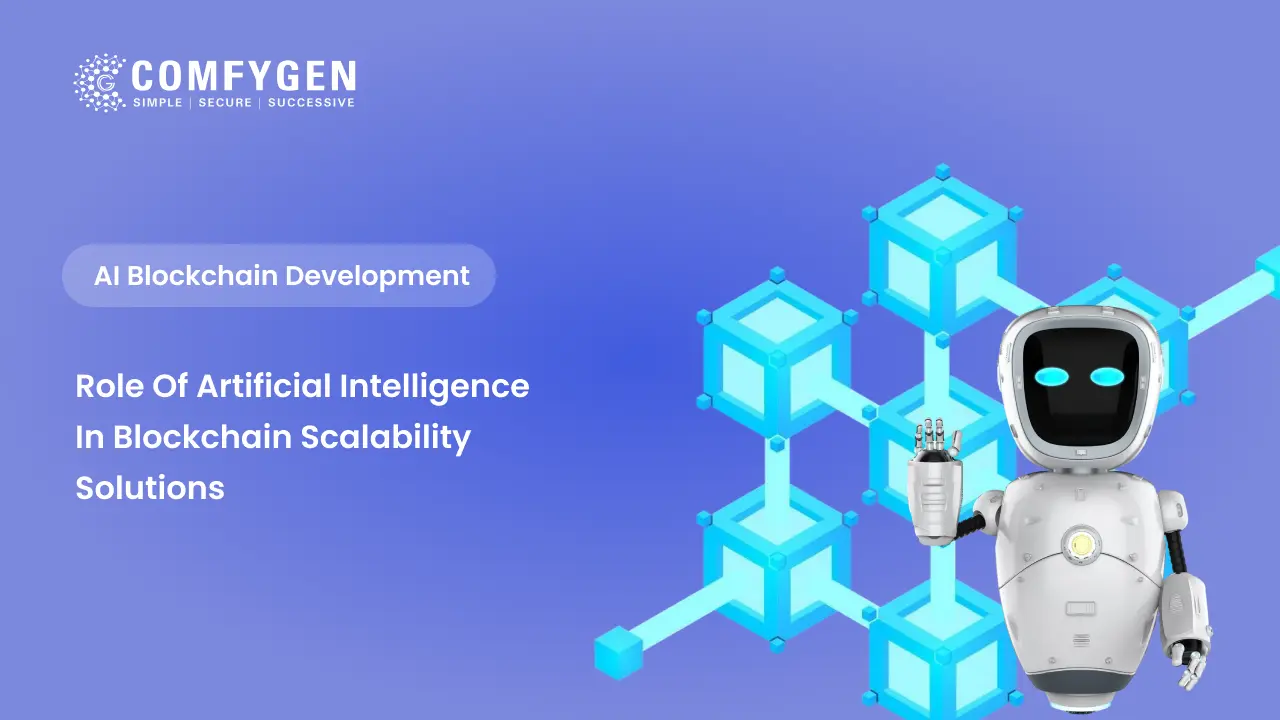Blockchain Identity Management : Beginner’s Guide 2025
Every day, thousands of people share their personal information and data with websites and apps that can be easily hacked or misused. Whether you’re logging into your bank or proving your age online, your identity plays a big role in digital life, where how you live and interact online. But what happens when that identity is controlled by centralized authorities, big companies, and stored in one place? This is where blockchain identity management steps in, offering a safer and more user-controlled way to manage digital identities.
These centralized systems create single points of failure, leaving your data subject to breaches, surveillance, and manipulation. Once stolen, personal information can be used to commit identity theft, financial fraud, or even digital exclusion. Furthermore, consumers have little access or control over how their data is collected, stored, or shared, resulting in trust issues between people and the services they use every day.
Blockchain identity management is an emerging way to solve these issues. It gives people more control, privacy, and security over their own identity in today’s digital world. By using decentralized technology it allows individuals to own and manage their digital identities independently, without having to depend on intermediaries. This shift is not just technical — it’s a movement toward digital self-empowerment.
Understanding Digital Identity in the 21st Century
Your digital identity isn’t just your name and photo — it’s your location, your purchasing habits, your preferences, and even your online relationships. Today’s systems store these pieces of information across several databases, each owned by a different entity. This leads to inefficiencies, frequent data breaches, and a lack of control for the user.
What Is Blockchain Identity Management?
Blockchain identity management is a digital system that uses blockchain technology to create secure, user-controlled identities. It removes the need for central authorities by allowing individuals to manage and verify their own identity data.
Instead of using one central system to verify your identity, blockchain allows people and organizations to confirm it directly with each other in a secure and trusted way.
Core Concepts Behind Blockchain Identity Systems
Understanding the key elements of blockchain identity management helps explain how digital identities can be made more secure, private, and user-controlled. These core components — like SSI, DIDs, VCs, and smart contracts — form the foundation of modern blockchain identity solutions used across industries today.
Self-Sovereign Identity (SSI)
Self-Sovereign Identity (SSI) is a blockchain identity management solution where individuals have complete ownership and control over their digital identities. Instead of depending on governments or companies to store and manage your data, you control what personal information you share, with whom, and for how long. This gives users full freedom, privacy, and security in managing their identity — a key benefit of blockchain for identity.
- How it works: You store your identity data (like name, age, certificates) in a secure digital wallet and choose what to share and with whom.
- Example: Showing only your age (not your full ID) when buying alcohol online.
Decentralized Identifiers (DIDs)
Decentralized Identifiers (DIDs) are unique digital IDs that are created and stored on the blockchain. Unlike traditional usernames or emails, DIDs are not tied to any central system or provider. They allow people and organizations to prove identity in a secure and decentralized way, without needing permission from a third party. DIDs are the backbone of many blockchain identity management solutions.
- How it works: Instead of using your email or social media to log in, you use your DID, which is verified through blockchain.
- Example: Logging into websites with your DID instead of Google or Facebook.
Verifiable Credentials (VCs)
Verifiable Credentials (VCs) are digital records — like driver’s licenses, diplomas, or medical records — that are digitally signed and can be verified on the blockchain. They help prove your identity or qualifications without showing more data than needed. For example, you could prove you’re over 18 without sharing your full date of birth. This approach reduces fraud and boosts trust in blockchain identity management use cases across sectors like healthcare, finance, and education.
- How it works: Schools, companies, or governments issue these credentials to you, and others can verify them without needing to contact the issuer.
- Example: A digital diploma you can show to employers — instantly verified, no paperwork.
Smart Contracts for Identity Verification
Smart contracts are self-executing programs stored on a blockchain. In blockchain identity management, smart contracts help automate identity checks and data sharing. They verify credentials without human involvement and make sure that no one can alter or misuse the data. This makes Identity Verification System faster, more secure, and tamper-proof — a major advancement in the blockchain identity management industry.
- How it works: Smart contracts auto-verify your ID on the blockchain without needing any middleman. They check your data and give access only if everything matches.
- Example: Applying for a loan? A smart contract can instantly verify your income proof or ID, making the process faster and safer.
Looking for a Custom
Blockchain Identity Solution?
Contact Now
Traditional vs. Blockchain Identity: A Side-by-Side Look
Still using outdated identity systems? Here’s a quick comparison between traditional identity methods and modern blockchain identity management, so you can understand how blockchain gives users more control, security, and privacy in today’s digital world.
| Feature | Traditional Identity | Blockchain Identity Management |
| Control | Central Authority | User-Centric (SSI) |
| Security | Prone to Breaches | Cryptographically Secured |
| Portability | Limited | Cross-Platform & Global |
| Privacy | Minimal | Full Consent-Based Sharing |
Blockchain identity puts you in control, unlike traditional systems where companies handle your data.
Real-World Applications and User Stories
Blockchain identity management use cases are no longer just ideas — they’re being used today to solve real problems across industries. Let’s explore how this technology is changing the game in different sectors:
1. Government & Digital Citizenship
Countries like 🇪🇪 Estonia have led the way with programs like e-Residency, which gives global citizens a blockchain-based digital identity. This allows users to start businesses, sign documents, and access government services remotely — all with a secure and verifiable digital ID.
In cities like Zug, Switzerland, blockchain IDs are used for local services like voting and taxation, showing how decentralized identity can modernize civic processes.
2. Finance & Banking
In traditional banking, KYC (Know Your Customer) processes are slow and repetitive. With blockchain for identity, users can verify themselves once and then reuse that verified ID across different banks or financial platforms. This not only speeds up onboarding but also reduces paperwork, fraud, and compliance costs — a key benefit in the growing blockchain identity management market.”
3. Healthcare
Healthcare providers can now use secure blockchain-based patient IDs to access medical records across clinics or hospitals — but only with the patient’s permission. This makes it easier for doctors to offer the right treatment, ensures patient privacy, and reduces risks linked to medical data errors or duplication.
4. Education
Academic institutions are now issuing blockchain-based diplomas and certificates, making it almost impossible to forge credentials. Graduates can share their verified academic history with employers instantly — it’s a big leap in trust, efficiency, and fraud prevention. This is one of the most impactful blockchain identity management examples in education.
5. User Stories & Testimonials
Early adopters of blockchain identity management solutions often talk about how empowering it feels to own and manage their identity. From being able to share only what’s needed, to having complete control and privacy, users describe the experience as secure, fast, and freeing — especially when compared to traditional systems.
These real-world blockchain identity management use cases show how decentralized identity systems are solving everyday problems — while protecting user privacy and improving trust across industries.
The User Journey in a Blockchain Identity System
Understanding how blockchain identity management works from a user’s point of view can help you see the real value behind it. Here’s a step-by-step breakdown:
1. Creating Your Digital Identity
Instead of signing up with a username and password, you start by creating a unique digital identity using cryptography. This involves generating a private/public key pair — the public key forms your Decentralized Identifier (DID), which acts like your digital ID, and the private key lets you prove that you own it.
=> No need for centralized approval — your ID is self-created and owned by you.
2. Storing Verifiable Credentials (VCs)
Once your DID is ready, trusted institutions (like banks, schools, or governments) can issue verifiable credentials linked to your identity — like diplomas, licenses, or KYC verification. These credentials are stored in your digital wallet, not on a central server, so you stay in full control.
3. Sharing Only What’s Needed
Need to prove you’re over 18 or hold a degree? With blockchain, you can share only the necessary details, not everything. Using zero-knowledge proofs, you can prove something is true without exposing all the underlying data.
🔒 This protects your privacy while keeping the process smooth and secure.
4. Revoking Access Anytime
Shared something you now want to take back? You can instantly revoke access to your credentials or identity data from anyone you’ve shared it with. This means you have real-time control over your digital life — something traditional systems rarely offer.
This journey shows why more people are exploring blockchain identity management solutions — because it gives them freedom, privacy, and power in a way that centralized systems never could.
Ready to Scale with
Blockchain Identity Management ?
Contact Now
Benefits of Blockchain Identity Management for Users
If you’re tired of handing over your personal information to dozens of platforms — only to worry about hacks or misuse — blockchain identity management offers a refreshing alternative. Here’s how it puts users first:
1. Full Control Over Personal Data
With blockchain-based identity, you’re in charge.
You choose what information to share, with whom, and for how long. No more blind trust in companies to protect your data — you manage access directly from your digital identity wallet.
2. Greater Privacy and Anonymity Options
Want to prove you’re over 18 without sharing your date of birth? You can.
Thanks to advanced tools like zero-knowledge proofs, you can verify facts without revealing full details, giving you more privacy and control than ever before.
3. Reduced Risk of Identity Theft or Fraud
Traditional systems store your data in centralized databases — a goldmine for hackers.
Blockchain, on the other hand, uses strong encryption and decentralization, making your identity data much harder to steal, tamper with, or misuse.
4. Cross-Border Access Without Re-Verification
Tired of redoing KYC every time you open a new account in another country?
With blockchain for identity, your verified credentials are portable. You can travel, work, or use global services without needing to start from scratch each time.
Risks, Challenges, and Limitations
Even though blockchain identity management offers major benefits, it’s not without hurdles. Here are some real-world challenges users and developers need to consider:
Usability Gaps for Non-Tech-Savvy Users
Many people still find blockchain tools confusing or hard to use. If the interface isn’t intuitive, users may give up or make mistakes. There’s a strong need for simpler apps and step-by-step guidance.
Risk of Losing Private Keys
Your private key is the only way to access your identity. If it’s lost, you could lose access to your data and services. That’s why secure backup and recovery methods are essential.
Lack of Standardization Across Platforms
Each platform has its own way of handling identity data, which makes sharing or moving identities difficult. To make blockchain identity work globally, we need common standards.
Regulatory Uncertainty
Many countries haven’t yet created clear legal rules for blockchain-based IDs. This slows down adoption and makes some companies hesitant to use it. Legal clarity is crucial for growth.
The Digital Divide
People without smartphones or stable internet — especially in rural or underserved areas — may not be able to access blockchain identity solutions. Inclusion efforts are key to closing this gap.
Common Misconceptions
Many believe blockchain identity is only for crypto experts, but the truth is — it’s being designed for everyday people, from students to seniors.
The Role of Open-Source Communities
Open-source developers play a huge role in building transparent, secure, and user-first tools — often without charging users. Their work helps push the industry forward.
⚠️ Lessons from Failed Projects
Not all blockchain ID projects succeed. Those that ignored user experience, lacked trust, or were too complex often failed. These failures taught the industry that simplicity, privacy, and usability are non-negotiable.
The Future of Blockchain Identity Management
As the blockchain identity management market continues to grow, it’s moving in exciting new directions — becoming smarter, safer, and more user-focused through integration with AI, IoT, and the Metaverse. Driven by the rising demand for privacy-first identity solutions, secure remote onboarding, and digital transformation across sectors like government and finance, The blockchain identity management market size is projected to exceed $34.9 billion dollars by 2030.
AI Based Blockchain Identity Management: Smarter Interactions, Better Privacy
AI development is now part of almost every digital experience — from virtual assistants to automated customer support. When combined with blockchain identity management, AI becomes:
- More secure: Your identity stays on-chain, meaning AI systems can verify who you are without storing your data.
- More private: You can decide what data AI tools access, helping reduce misuse or surveillance.
- More personalized: Verified credentials stored on blockchain can let AI tailor experiences to your profile, without exposing sensitive information.
User Use Case: Imagine an AI-powered health assistant that securely accesses your verified medical history (with your permission) — no passwords, no paper files, just trusted blockchain credentials.
IoT In Blockchain Identity: A New Level of Access Control
The Internet of Things (IoT) is filled with smart devices — from fridges and cars to door locks and thermostats. But managing identity across these devices is complex and risky without secure ID systems.
Blockchain identity helps by:
- Verifying users and devices securely: Only verified identities can access specific devices or data.
- Removing central vulnerabilities: Your smart devices don’t rely on a cloud server to recognize you — they trust your blockchain-based identity.
- Simplifying user access: Whether it’s your phone unlocking your home or your car starting for a family member, blockchain ensures you control access.
Example: Your digital ID could automatically unlock your hotel room door when you arrive — no check-in desk needed.
Metaverse + Blockchain Identity: Owning Your Virtual Self
In virtual worlds and Metaverse platforms, identity becomes more important than ever. You’ll need to prove who you are across gaming, workspaces, events, and social platforms — all in a digital space.
Blockchain identity management makes this possible by:
- Giving you a single identity that works across multiple virtual platforms
- Ensuring your virtual credentials are secure and portable
- Protecting your privacy — only share what’s needed, like age or access rights
Real Use Case: Attend a virtual event using your blockchain ID that proves you’re over 18, without revealing your name, email, or country.
Cross-Chain and Interoperable Identity Frameworks
Currently, each blockchain often runs as its own system. But future identity solutions aim to work across platforms like Ethereum, Solana, and others. This means:
- You won’t need different IDs for different apps.
- One blockchain identity can be used for login, access, and verification on any compatible system.
- It saves time and reduces risk from managing multiple accounts.
Goal: One identity for all digital interactions.
Ethical and Inclusive Identity Design
As blockchain identity solutions evolve, developers are focusing on ethical, fair, and inclusive design. This means:
- No discrimination based on location, income, or tech access.
- Privacy by design — users stay in control.
- Access for everyone, not just tech-savvy users.
This approach makes blockchain identity more trusted, usable, and globally adopted.
Trends to Watch: ZK Proofs & Biometric Blockchain IDs
Zero-Knowledge Proofs (ZKPs)
These allow you to prove something (like age, citizenship, or membership) without sharing extra personal details. It’s privacy-focused and perfect for high-security situations.
Example: Prove you’re over 18 for a website without showing your birthdate.
Biometric Blockchain IDs
These use your face, fingerprint, or voice as secure proof of identity — linked with blockchain to ensure no one can fake or tamper with it.
It makes logging in or verifying yourself fast and foolproof, especially useful in places like airports, hospitals, or virtual offices.
Final Thoughts:
Blockchain identity management solutions are more than just a technological upgrade — they represent a fundamental power shift. No longer do individuals need to be passive data subjects, surrendering control to large corporations or government databases. With the right tools, you can take back control of your identity and become an active participant in how it’s created, shared, and protected.
At Comfygen Technologies, we believe in building a future where digital identity is secure, user-owned, and universally accessible. Our solutions are designed to help businesses and individuals transition to privacy-first, decentralized identity systems that empower users from day one.
👉 Wondering ” how to use blockchain for identity management? “
Start small — explore decentralized ID wallets, learn about verifiable credentials, and begin integrating trustless verification into your digital journey. Our team is here to guide you every step of the way.
The future is decentralized, and your identity should be too. Let Comfygen Technologies help you lead the way.
FAQs You can start by: Downloading a decentralized identity wallet Creating a DID Collecting verifiable credentials Exploring platforms like Civic, ION, or custom solutions from Comfygen Technologies While no system is 100% hack-proof, blockchain drastically reduces vulnerabilities by eliminating centralized storage points, encrypting all transactions, and allowing selective disclosure of identity data.
What is blockchain identity management and how does it work?
How is blockchain used for identity management?
Is blockchain identity management safe?
How big is the blockchain identity management market?
How do I start using blockchain for identity management?
Can blockchain identity systems be hacked?
What industries use blockchain identity management?
How do I start using blockchain for identity management?
What are examples of blockchain identity management solutions?
Why should businesses adopt blockchain identity solutions?

Mr. Saddam Husen, (CTO)
Mr. Saddam Husen, CTO at Comfygen, is a renowned Blockchain expert and IT consultant with extensive experience in blockchain development, crypto wallets, DeFi, ICOs, and smart contracts. Passionate about digital transformation, he helps businesses harness blockchain technology’s potential, driving innovation and enhancing IT infrastructure for global success.
Based on Interest
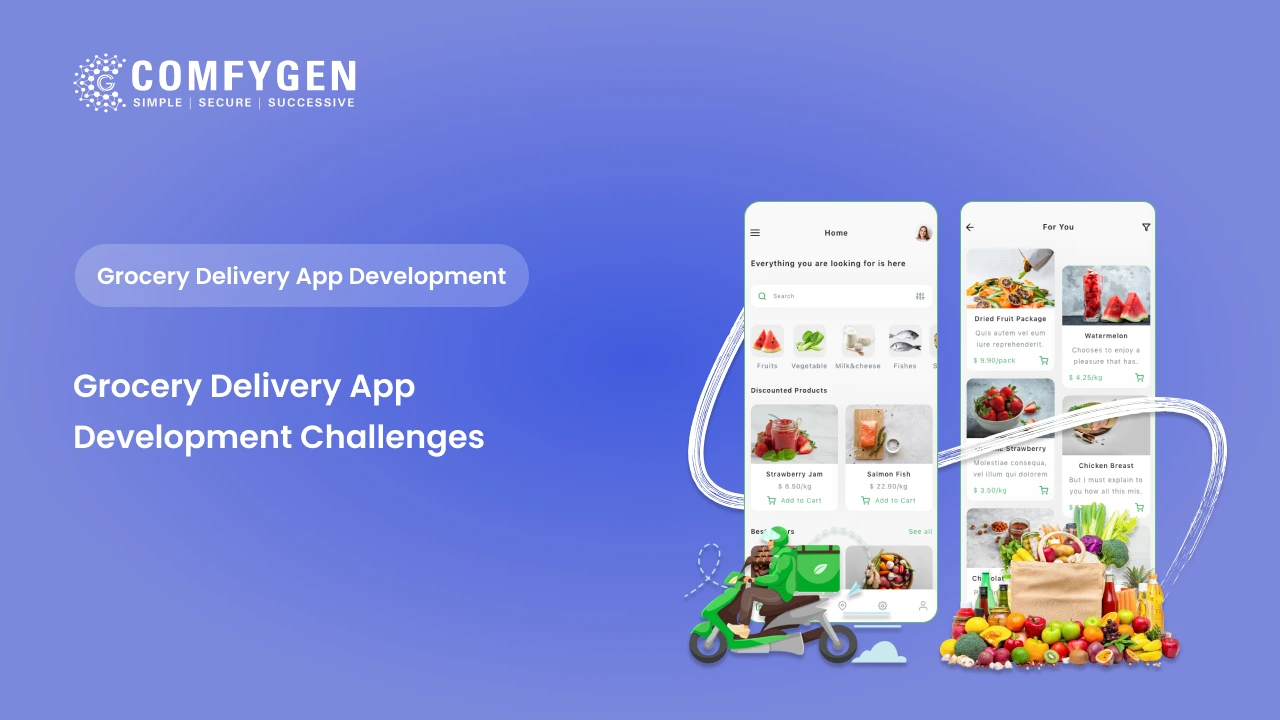
Grocery Delivery App Development Challenges: Common Problems and How to Overcome Them
In today's fast-paced digital age, the online grocery delivery industry is experiencing significant growth. With consumers preferring doorstep facilities over traditional shopping,…

